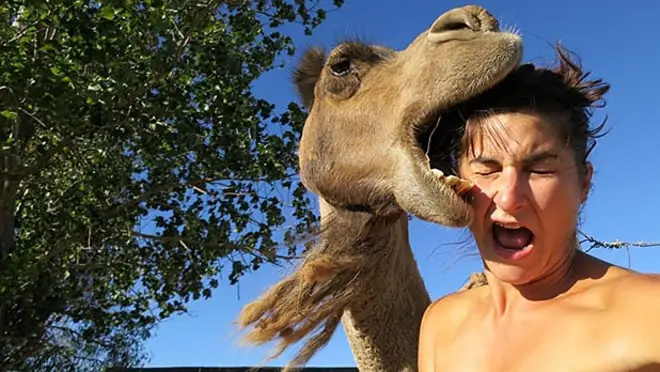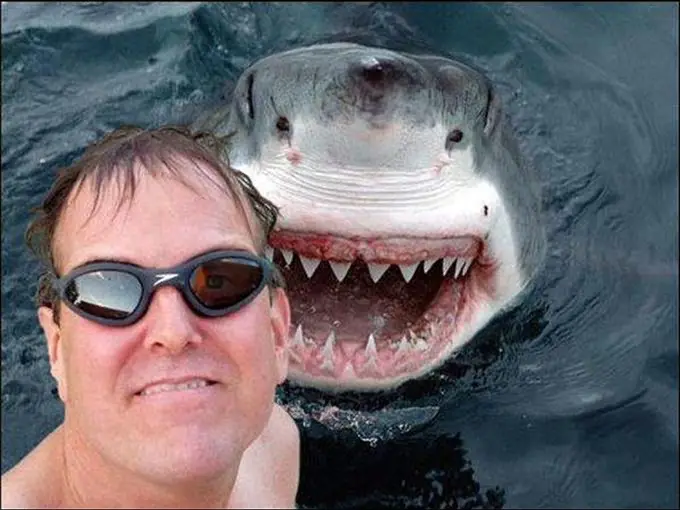Killfie Country
Last year alone, more Americans were killed taking selfies than by shark attacks.
By Alli Guaman, Marymount Manhattan College
You see selfies everywhere: on Tumblr, on Facebook, on Instagram and even on the train when you catch the guy in front of you smoothing his hair for his phone’s front camera.
Taking selfies, either when you just feel like you’re having a fab day or when you really want to capture a moment, has become a trend, and one that doesn’t look like it’s stopping anytime soon.
But, what happens when your desired selfie is in a not-so-safe environment, say at the edge of a bridge? Stopping what you’re doing just to concentrate on getting the perfect angle on your camera might just lead to your fall, as the recent study, “Me, Myself, and my Killfie: Characterizing and Preventing Selfie Deaths,” shows. But what’s even scarier than taking a “killfie,”which means performing risky feats while taking a selfie, is that the trend is one the rise.
Currently, 127 people have died taking killfies, and the study concludes that India, with a total of 76 deaths over the past three years, has suffered nearly 60 percent of the total number of killfie incidents. Reasons for death include falling from elevated heights, drowning, animal attack, vehicle accidents and even the accidental firing of weapons.

However, although India is the only nation to reach the double digits when it comes to killfie deaths, current selfie trends in the United States are dangerous enough to raise the national killfie death toll to number one if people aren’t careful. This includes everyone, adults and the elderly, but especially the youth, who crave attention on social media. I know it’s tempting, but put your phone down or even better, put it away. As “USA Today College” has declared, there have been more deaths from killfies than from sharks in the previous year, and even though the ratio may appears to be small, 12:8, this is no laughing matter.
A study conducted by the Institute of Advanced Motorists, for example, asked 500 drivers about their selfie habits behind the wheel, and 9 percent admitted to participating in the behavior during the last month. The percentage of younger people–late teens and college-aged individuals–who participated in taking a driving selfie nearly doubled to 17 percent.
The statistics aren’t shocking; often, students are eager to show off their newly acquired permit and motor skills, which is ironic, because taking the selfie just shows everyone who sees the picture how irresponsible the driver is. A moment’s distraction can lead to a lifetime of consequences, such as this case, when a woman took a selfie while driving only seconds before a collision.
What it comes down to is common sense. If you are under circumstances that require your complete concentration, let’s say driving, hiking on steep mountains or beam walking if you’re into that, keep your phone in your pocket. If you are in an unsafe environment, such as at a petting zoo with a crocodile that you think would look great in a selfie, think twice and keep your phone in your pocket. If you want to take a selfie, but it requires you to take a risk like jumping onto a train, hanging over a ledge or sitting on train tracks, don’t do it. Keep your phone in your fucking pocket.
Besides, selfies may not as be as big of a hype as everyone thinks. To take a selfie, with the goal of posting the image on social media (most often Instagram), is a narcissistic act. Don’t take my word for it though, as I don’t have an Instagram account, but take it from the Instagram users that admit they’ve created the most narcissistic social network on the planet.
In this survey of 3,700 college students released by LendEdu, 64 percent voted Instagram as the most narcissistic social media platform due to the insane amounts of selfies. With just a filter, a little saturation and added lighting, the students have used the selfie “to boast of their daily tidings, carefully craft their public image, and feed their egos in this interconnected digital age.”
The feasibility of just using your front camera and capturing the perfect angle of your face as you maneuver your phone with your hand is just too tempting for some. So tempting, in fact, that for some selfie-takers, pictures become their main focus. “Tagger’s Delight,” a study conducted by the Birmingham Business School, shows how social media and daily selfies can negatively impact relationships.

Professors introduce the theory of self-disclosure, the “process of making oneself known to other people,” as the main reasons individuals use social media sites; however, selfies can be causing the exact opposite. They asked 508 Facebook users about their selfie posting habits, went through their image postings to ascertain the number of selfies posted, and then asked the participants in the study about their relationships with people. Those who posted more selfies were found to have more of a problem connecting with people on a profound level.
Selfie-takers also distance their friends through means of peer pressure. No one wants to feel left out of a party because they are the only ones not drinking in a selfie, and no one wants to see your new Michael Kors bag when they don’t have the money to buy one.
So sure, take pictures of your Spring Break trip to the Poconos or the mid-semester road trip to Washington D.C. Pictures, after all, do keep those memories alive, but just as you are keeping those memories alive, keep yourself alive, and once again, put your phone away.

















